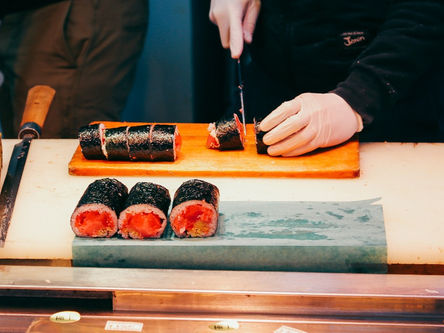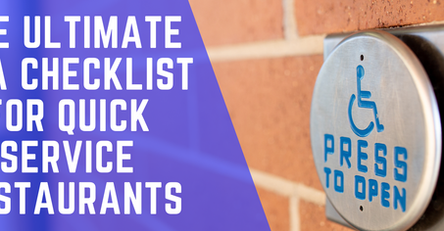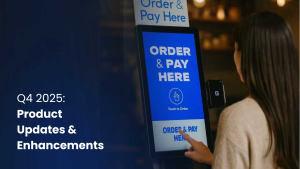Restaurant (8 Steps + Best Practices)


Opening a restaurant can be extremely rewarding but also stressful. To run a successful restaurant, you need a top-notch chef, staff, quality ingredients, and excellent dishes. From a strategy perspective, you need a solid business plan, great leaders, and the finances to keep everything afloat. Lastly, you need to be flexible, creative, and adaptable — these attributes have been especially true since the beginning of the pandemic. Below, we’ll cover the steps you need to take to open your sushi restaurant and some best practices to help set you up for success.
1) Create a Business Plan
We cannot overstate the importance of a business plan for any business. It acts as a guide for you, your investors, and other stakeholders, outlining your vision for your sushi restaurant. A business plan also helps make sure you don’t overlook anything.
Generally, business plans include a few things:
- Description of your company
- Analysis of the market you’re entering
- Overview of how your restaurant will be managed and organized
- Description of goods you’ll provide
- Marketing strategies and advertising goals
- Financial projections
Anyone reading your business plan should come away with a solid understanding of what to expect from your business. To provide a clear picture of your vision, keep the following questions in mind while formulating your business plan.
Who Is Your Target Customer?
In any business, a target customer is someone who wants to buy what you’re selling. In this case, you want to appeal to diners who love sushi. However, this demographic may vary based on your geographic location and the neighborhood you’re planning to open your restaurant.
For some insight, U.K.-based YO! Sushi has been around since 1997. They have over 75 locations in the U.K. and focus on the 18 to 35-year-old age range, according to PR Week. However, there are some areas where your target demographic may be trendy middle-aged and older diners. The key here is to do your research before defining your target customer, as this will give you valuable insight to apply to the rest of your business plan.
What Is The Name of Your Restaurant?
Providing the name of your restaurant in your business plan is vital. Additionally, think about including a logo and overall design theme for your restaurant. A mock-up of your sushi menu may be especially helpful for investors to review, as it will give them a clear, visual representation of your vision.
When choosing a name for your sushi restaurant, make sure you have meaning and a story. Many successful sushi restaurants in the U.S. lean on chef and owner names — especially if they align with sushi’s Japanese roots. For example, Masa (a three-Michelin-starred sushi restaurant in New York City) is named after the Japanese chef — and owner of the restaurant — Masayoshi Takayama. You want your restaurant’s name to be memorable but appropriate, so choose wisely. Here are a few helpful tips to keep in mind while naming your restaurant if you’re stuck.
What Technology Will This Restaurant Need?
Technology has always been important for restaurants but has become even more so amid the COVID-19 outbreak. In fact, 87% of restaurants say that turning to technology has been critical to their survival since the beginning of the pandemic.
Self-ordering kiosks have also carved out an important place in the restaurant industry because of numerous benefits like streamlined ordering, upselling opportunities, and contactless payments. Over the last several years, self-service options have become an expected and preferred option for diners. Tillster finds that 65% of customers say they would visit a restaurant more often if it had self-service kiosks. The same study shows that 30% of customers would rather order via kiosk than with a cashier if the lines for both options were the same length.
This technology is on the rise, and as it becomes more widespread and sophisticated, restaurants are expected to keep up to meet customer demands. When creating your business plan, be sure to determine what role you want technology to play in your business, and consider how it contributes to your sushi restaurant’s success.
2) Establish a Legal Entity (LLC or LP)
Establishing your small business as a legal entity is a must. This protects you and your business and shows potential investors that you’re serious. We recommend either a limited liability corporation (LLC) or a limited partnership (LP). The purpose of both is to limit your personal liability, but each comes with different degrees of protection. Here are some of the major benefits and drawbacks of each:
Pros of an LLC
- You only need one person to form an LLC, but can have unlimited members.
- LLCs can be taxed as a sole proprietor, partnership, S corporation, or C corporation.
- There is minimal paperwork, and filing costs are low.
- LLC members are protected from some or all liability if the restaurant runs into legal or financial issues.
Cons of an LLC
- Members cannot pay themselves wages.
- Renewal fees can be high depending on your state.
- LLC ownership is spread across all members (unless you run the LLC alone).
Pros of an LP
- The potential for capital is higher, which can lead to more financial security.
- General partners are in charge of daily operations, which keeps limited partners out of the nuts and bolts of the business.
- Limited partners can be replaced or exit the business without dissolving the LP.
- Investors can be involved without committing to daily operational responsibilities.
Cons of an LP
- An LP cannot be run by just one person.
- General partners take on more risk, as they have to make all the decisions on behalf of the entire company.
- LPs are required by law to hold annual meetings and create in-depth partnership agreements.
3) Register Business for Taxes and Acquire Licenses
From a legal standpoint, there are many things you need to do to open your restaurant and be in good standing with the government. Here are some licenses and permits you need to obtain before opening your sushi restaurant:
- State business license
- Employer identification number (EIN)
- Certificate of occupancy
- Foodservice license
- Sign permit
- Music license
- Resale permit
- Building health permit
- Employee health permit
- Seller’s permit
- Liquor license, if you plan to serve alcohol
- Valet parking permit
- Dumpster placement permit
4) Choose a Location
When planning to open your sushi restaurant, the right location is vital to your success. As mentioned previously, choose a location where you know your target customer lives or frequents. This may be a trendy neighborhood of young professionals, a tourist-heavy downtown location, or a neighborhood known for its busy nightlife. Other things to consider when choosing a location are the ability for outdoor dining, foot traffic, and square footage. The vibe of the location should be a good match for how you envision your restaurant, so select a location accordingly.
5) Hire a Master Sushi Chef and Waitstaff
It’s critical to hire an expert sushi chef to ensure that the food you serve is as high quality as possible. Similarly, you’ll need to hire a knowledgeable staff who is familiar with the sushi industry. Create an in-depth training plan for new hires so that all team members have a consistent, thorough education. Before making your first hires, here are a few tips to keep in mind:
Tips for Hiring a Sushi Chef
When hiring a sushi chef, find someone who has experience in the field and authentic knowledge of sushi and Japanese cuisine. This ensures the chef will honor Japanese culture while also providing unique dishes for diners. Additionally, choose a chef who is passionate about restaurants and has creative business ideas, which will help your restaurant withstand the test of time.
Tips for Hiring Wait Staff
As mentioned, you can create a wait staff training program with help from your master sushi chef, but it can be extremely helpful if you hire wait staff with previous experience in Japanese dining or Asian cuisine. For example, less training will be necessary for staff already familiar with the sushi restaurant business, who will likely already know the differences between nigiri, sashimi, and general sushi rolls.
6) Utilize Self-Ordering Kiosks and Other Technology
Enhancing the customer experience is something every restaurateur aspires to do. One way to do this is by using the latest technology like self-ordering kiosks and digital signage. Within casual restaurant settings, self-ordering kiosks have been proven to boost profitability, increase average order value, and improve the overall customer experience. For more formal restaurants, technology like digital signage has been shown to increase brand awareness by 47.7%, according to Mvix. Depending on your financial and marketing benchmarks, you can leverage technology to help meet or exceed your goals.
7) Get All Your Tools and Supplies
Before your sushi business can open its doors, you need to ensure you have all the tools and supplies you and your staff need. This includes developing relationships with food distributors, identifying a Japanese restaurant supply store, and connecting with a local ceramicist to create your restaurant’s custom dishware.
8) Open the Doors to Your Sushi Restaurant
Before you open the doors to your sushi restaurant, make sure you have a solid marketing and advertising campaign in the months leading up to your first seating. We recommend hosting a soft opening with family, friends, and maybe local media. Connect with your local chamber of commerce to host a ribbon-cutting ceremony on your first official day open. This can drum up excitement about your restaurant — particularly if it’s located in a close-knit community.
Sushi Restaurant Best Practices
It’s one thing to open a sushi restaurant — but how do you keep it open? Beyond serving up delicious food, there are a few best practices you can implement to make your sushi restaurant as successful as possible.
Consider Using Social Media To Create Buzz
Social media is a great way to create buzz about your sushi restaurant without spending much money. Leading up to your opening day you can post progress photos and videos, or even informative videos about fresh sushi and “how to make sushi” demos. According to QSR Magazine, almost half of U.S. diners say that social media posts have made them try a new restaurant. Even more, 22% of diners say that social media posts have caused them to return to a restaurant, so don’t downplay its influence!
Buy the Right Dinnerware for a Sushi Restaurant
Dishware at any restaurant is necessary for success, especially at a sushi restaurant. As mentioned, if you want to provide an elevated experience that ties to your overall brand aesthetic, you can have custom sushi sets and matching sake glasses created. Or, you can order basic sets that include sauce dishes, plates, and chopsticks from online retailers. When choosing which route to go for dishware, consider how large your restaurant is and how often dishes will need to be cleaned.
Supply Your Sushi Chef With Quality Knives and Cutting Boards
Any experienced chef will tell you that they require quality knives to do their job effectively. Your sushi chef may have a preferred brand or type of Japanese knife they usually use, but popular brands include Yoshimi Kato and Ajimisaku.
Additional kitchen equipment you will need to run an authentic sushi restaurant includes:
- Hangiri sushi oke
- Shamoji spatulas
- Mise en place containers
- Ladles
- Grill supplies
- Steamers and warmers
- Plating and cooking chopsticks
- Sushi rolling mats
- Fish scalers and fishbone tools
- Pastry brushes
- Graters
Utilize a Mobile App for Online Orders and Deliveries
Online ordering and food delivery saw a boost in 2020 due to the pandemic, and it hasn’t slowed down since. In fact, revenue in the online food delivery segment is projected to reach $339,257 million in 2022, according to Statista. With these statistics in mind, it’s easy to see how utilizing a mobile app for takeout and deliveries has the potential to turn a good business into a great business.
Enhance Your Sushi Restaurant With INFI
Opening a sushi restaurant requires you to juggle a lot at once, but leveraging technology in your restaurant can help make things much more manageable. INFI has an array of technology options that can enhance your sushi restaurant, from self-ordering kiosks to mobile app and website development. Our solutions were built by experts with restaurant owners in mind — schedule your demo today to learn more about how INFI can help your new sushi business succeed!
About infikiosk
Related Posts

Case Study: Sophie’s Cuban Cuisine Drives Revenue Growth with Advanced Self-Order Kiosk Technology
Client: Sophie’s Cuban Cuisine Industry: Fast Casual Dining Locations: 11 Point of Sale: Toast Key Stakeholder: George J. Cestero, COO & IT/Digital Marketing Director...
6 QSR Trends That Are Changing the Restaurant Industry
Today, QSR establishments continue to see ongoing changes in response to social and technological developments. We’ve compiled six of the...
The Revolution is Here: How Self-Ordering Kiosks are Reshaping the QSR Landscape
One particular innovation has started to significantly reshape the QSR industry landscape—self-ordering kiosks.
Maximizing Efficiency During Restaurant Slow Periods: A Digital Approach
This blog post explores how to navigate these slow periods effectively, focusing on digital investments and smart strategies to enhance...
Navigating the Future of QSRs: The Role of Kiosks and Technology
We went through these articles and skimmed through the almost 500 comments to get some insight on how people are...
How to Open a Pizza Place: Step-by-Step Guide & Tips
If you’re considering starting a pizza place, follow this comprehensive guide to ensure your success.
Comparing Self-Ordering Kiosks vs. Traditional Counter Service: Which Is Right for Your Restaurant?
This article delves into the pros and cons of self-ordering kiosks versus traditional counter service to help you determine which...
Top Marketing Ideas for Quick Service Restaurants (QSRs)
QSRs need to leverage creative approaches to boost brand visibility and drive sales. Here are some top marketing ideas...
The True Costs of Online Ordering: DIY vs. Third-Party Platforms
As online ordering continues to reshape the restaurant industry, businesses face a crucial decision: build an in-house ordering system or...





